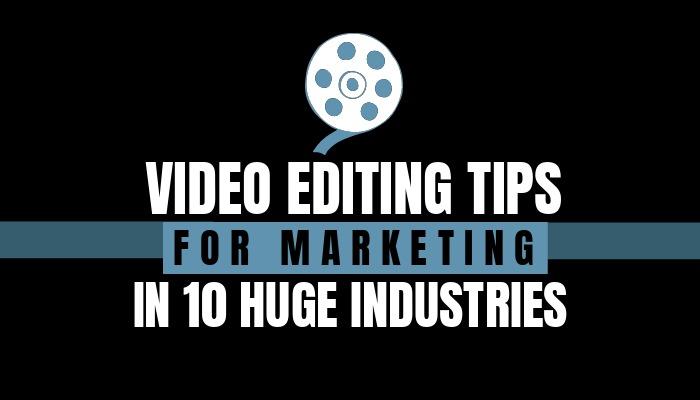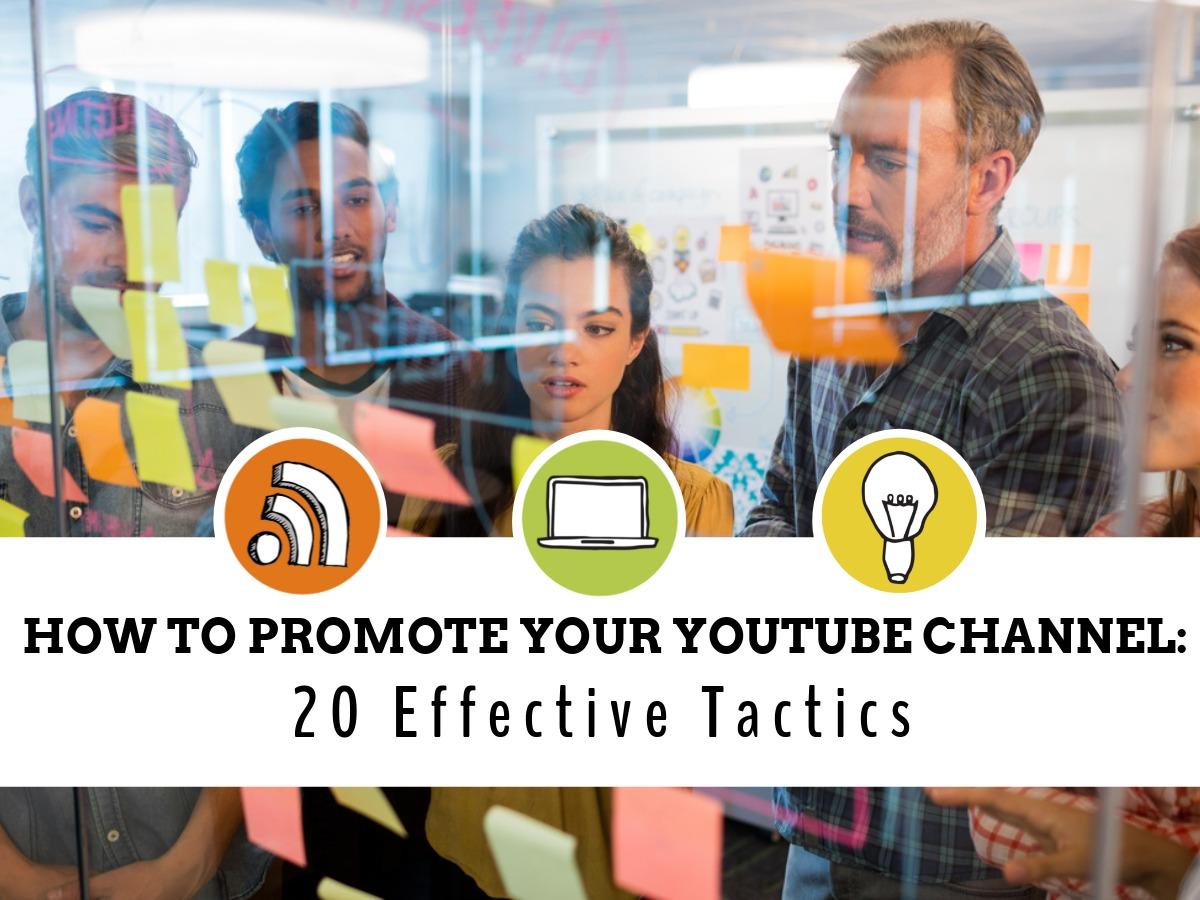Video Marketing for Beginners
Regardless of where you are in your marketing strategy or in the life cycle of your company, video marketing absolutely needs to be a part of your game plan. Moving forward, if you stick merely to “what’s worked” in the past, then let’s just say the future isn’t looking all that bright. Video marketing became a mainstay in the realm of marketing strategies, and it is certain to be even more critical.
The great thing about integrating a video marketing strategy is that you don’t need a ton of skills to get started. Even beginners can implement an effective approach—one that gets your brand noticed.
Table of contents:
- ● Video Marketing for Beginners
- ● Video Marketing is So Powerful
- ● Video Marketing and the Question of Audience
- ● Define Your Objectives
- ● Coming Up with Your Video Marketing Game Plan
- ● Decide What Type of Video Marketing Content You Will Use
- ● YouTube Trailers and Intro Videos
- ● Finding Relevant Topics to Cover in Your Videos
- ● Do Some Keyword Research
- ● Shoot and Edit
- ● In Conclusion…

If you think about how users spend time on the internet and social media, it’s easy to see why integrating video into your advertising efforts is a must. A few statistics to consider:
According to Hubspot, nearly 20% more companies used a video marketing campaign this year versus last year.
YouTube is the second most popular search engine in the world after Google.
Wordstream found that over 90% of users who watch an entertaining video on their phone will go ahead and share and Facebook experiences over 8 billion video views on any given day.
If these numbers aren’t enough to convince you, just google video marketing statistics and you’ll see some eye-opening results. The question therefore stands, are you doing enough by way of video to remain relevant in your industry and keep up with your competitors? In this guide, we go over best practices, tips and tricks for maximizing your marketing efforts. We will also review some of the key objectives associated with any good video strategy.
If you think about how users spend time on the internet and social media, it’s easy to see why integrating video into your advertising efforts is a must. A few statistics to consider:
- According to Hubspot, nearly 20% more companies used a video marketing campaign this year versus last year.
- YouTube is the second most popular search engine in the world after Google.
- Wordstream found that over 90% of users who watch an entertaining video on their phone will go ahead and share.
- Facebook experiences over 8 billion video views on any given day.
If these numbers aren’t enough to convince you, just google video marketing statistics and you’ll see some eye-opening results. The question therefore stands, are you doing enough by way of video to remain relevant in your industry and keep up with your competitors? In this guide, we go over best practices, tips and tricks for maximizing your marketing efforts. We will also review some of the key objectives associated with any good video strategy.
Video Marketing is So Powerful

It’s pretty obvious by now that video marketing is here to stay. You need only look at platforms like TikTok and Snapchat, not to mention YouTube, that have grown exponentially in a short period of time. TikTok’s dramatic rise amid the pandemic sparked a powerful message in particular about the importance of video in people’s lives.
Simply put, video connects people on a level that images alone or text just can’t. Whatever the type of video, be it a tutorial, explainer video, product demo, ad, you name it, there’s a behind the scenes glimpse that really pulls users in.
In this day and age, consumers prize transparency perhaps more so than they do anything else. Video offers that transparency; a video ad or webinar, for example, show that you’re not afraid to put yourself out there in a manner of speaking.
Just think about your own online habits. Think about your buying habits. If there is a video available associated with a product or service, are you not inclined to watch it first before pulling the trigger? And aren’t you in fact more inclined to pull that trigger after watching a video that offers greater insight and explanation? Most users would answer both of these questions in the affirmative. So let’s get started…
If you think about how users spend time on the internet and social media, it’s easy to see why integrating video into your advertising efforts is a must. A few statistics to consider:
- According to Hubspot, nearly 20% more companies used a video marketing campaign this year versus last year.
- YouTube is the second most popular search engine in the world after Google.
- Wordstream found that over 90% of users who watch an entertaining video on their phone will go ahead and share.
- Facebook experiences over 8 billion video views on any given day.
If these numbers aren’t enough to convince you, just google video marketing statistics and you’ll see some eye-opening results. The question therefore stands, are you doing enough by way of video to remain relevant in your industry and keep up with your competitors? In this guide, we go over best practices, tips and tricks for maximizing your marketing efforts. We will also review some of the key objectives associated with any good video strategy.
Video Marketing and the Question of Audience

When it comes to marketing tips, the first and foremost element in your overall strategy needs to be defining that audience. Audience will dictate what type of videos you create. Your target audience will also lead you to post your videos on one social media platform versus another. Good marketers know that defining their ideal users and creating content around them is the only way to approach any campaign.
Gathering User Data
Fortunately, there are a variety of avenues that you can use to gather information regarding the users/viewers you want to target. You want to find out all that you can regarding everything from gender and age to industry and interests. The more information you have, the more focused your video content will ultimately be and thus, the more effective.
You might try Google Analytics to this end. Facebook also has a couple of tools that can help you better understand the overall demographic with which you’re dealing. Send out a survey to existing customers and just ask them about their buying behaviors and other such data.
Utilizing best practices, once you’ve gathered all of the info you possibly can and start to gain a clearer picture of what your audience looks like, then you need to further refine.
Creating a Buyer Persona
A buyer persona is basically a “sketch” of who your ideal consumer is. Numerous companies use this tactic to better understand the wants and needs of their potential customers, and therefore, be able to devise a more dynamic marketing strategy. You could give that persona a name, a job, an age, a location, list out their interests. Because this is about video marketing, you also want to spend some time figuring out where they spend the most time on social media and consequently, what they do there.
Define Your Objectives

Once you know who you’re marketing to and can start to wrap your head around the type of video/social media content that will work best on the likes of Facebook, Twitter, and Snapchat for example, you need to define what you hope the end result to be. Going on a journey without some sort of map would eventually be meaningless. The same applies to your overall marketing strategy.
Create Awareness Through Video Marketing Efforts
Brand building is about generating awareness for that brand. How do you generate awareness? The use of video is one sure way to help boost that buzz around your brand. So if indeed this is your end goal, then the video content has to speak to this. In other words, you’re not necessarily going to spotlight a product or service. It shouldn’t be overly salesy. Rather, it needs to highlight certain aspects of your brand. How can you help people to better discover your brand? Your video needs to address this.
Forge Customer Connections
Maybe it’s not about brand highlighting, but instead taking an opportunity to really connect with customers on a deeper level. The content here should be based on getting users to authentically engage with your company. What another side of “you” for example can you show them that might take that relationship to the next level? How can you outshine your competition in this respect?
Get that Sale
For many brands, utilizing video is about that final push to conversion. And that is absolutely fine. Just keep in mind, because video is so visual, you still want to maintain that honesty and authenticity factor with whatever type of content you put out into the digital world or that of social media.
Coming Up with Your Video Marketing Game Plan

Defining the various aspects of your content marketing campaign is key. Once you’ve gone through those steps, now you want to plan out exactly how you’re going to launch any sort of video marketing campaign. From when, where, and how you post, to what sorts of video content you will create, you want to be sure and nail down all aspects of your approach.
Create a Calendar
Regardless of the type of content marketing you’re doing—video, social media, print even—you want to come up with a consistent approach. Randomly putting up posts on Facebook or Instagram without any rhyme nor reason just won’t get it done. Not to mention, you don’t want to be rushing around last minute trying to “get something out there.” Odds are, it won’t reflect your best effort.
Online Calendar Tools
There are actually a variety of online calendar-related tools that are easy to use and allow you to keep on top of your video content strategy. These allow you to input your content and then help you maintain consistency. Some even have premade content for you that you can customize and upload.
Decide What Type of Video Marketing Content You Will Use

This is obviously a huge piece of the puzzle. Any good game plan should consist of a diversified strategy. That is to say, video ads are certainly great, but what else can you do? What other kinds of videos can you post to try and generate awareness and forge stronger bonds with your audience?
Video Promos/Ads
Any video content strategy will obviously include straight-up ads and promos. But can you take it a step further? Can you create video ads that entertain as well as sell? Remember, people watch videos largely to be entertained. If you can incorporate that entertaining element either by way of humor or human interest, for example, it makes your ad that much stronger.
Explainer Videos
Explainer videos, as the name suggests, are just that—they explain who you are, what you do, how your product/service works, you name it. The key here is usually conversion. So after watching the explainer video, the user should follow a link to your website or a social media page. They should subscribe to a webinar or email list. The better job you do of explaining yourself, the more likely they will be to heed that CTA.
Video Testimonials
Video testimonials are excellent ways to reach that segment of your audience that is doing a deep dive into your online reputation before deciding on who they plan to do business with. More than a few printed quotes from past clients, these pieces elicit more credibility and emotion and are likely to influence the decisions of those who view them. Vocal Video is a software platform for creating authentic, compelling video testimonials and reviews without any video editing experience. Brands, like Google, Chevrolet, and HPE, use it to collect and publish customer, employee, and influencer stories for use on their website, social media, and marketing communications. Vocal Video is the only all-in-one platform for collecting, editing, hosting, and sharing social proof videos.
YouTube Trailers and Intro Videos

YouTube is second in the search engine race only behind Google—so make use of it. You can do some really innovative things by way of creating trailers that tease about an upcoming promotion or event for instance. And YouTube intro videos are another layer in your brand building program. That is to say, they are meant to highlight certain aspects of your brand, provide key info, and entice viewers to engage further.
Homepage Videos
Often overlooked, a strong homepage video goes a long way toward endearing viewers to you. Your website is a central component of your company identity. This is your space to present yourself in a compelling and resonant way. A homepage video could offer background on the company’s foundations. It could also provide users with testimonials from past satisfied clients. Anything that you believe will help users connect and come away with a better inside understanding of your business.
Finding Relevant Topics to Cover in Your Videos

Beyond just the type of content—and the above list is by no means exhaustive—there is also the question of topic. Ensuring that your topics are timely, meaningful to your brand, and valuable to your viewers is crucial. Your video marketing strategy is only effective if people actually take the time to watch. Outdated info and topics that have no relevance to your target audience’s life will inevitably get passed over.
Figure Out What Your Audience Likes
A relatively simple strategy, but a necessary one. If you’re creating content that is of no interest to that ideal user, then you’re simply wasting time and energy. So how do you find out what your users want to see? Social media listening is one effective way. See what’s trending on Facebook and TikTok and use this as a basis for your own approach. You can also again, send out a survey and just flat out ask about the kind of videos they would like to see.
Look to Your Competitors
Maybe one of your competitors has a dynamic video content strategy that is hugely popular. What can you learn from their approach? You may have to do a little homework here in terms of checking out their sites, social media accounts, and other such channels. But if it gets you insight into an effective video campaign, it will be worth it.
Do Some Keyword Research

This is also a highly effective way to try and capitalize on what’s popular now. What keywords seem to recurrently pop up in your industry? SEO is still very much alive and kicking; it’s what gets you ranked after all. Google has tools to help you to this end. There are also keyword planners that can give you additional insights.
Creating Your Videos
The actual process of video production is not nearly as hard as most marketers may think. There are online video marketing tools and resources available that can make even a novice look like a pro. The important thing when it comes to video production is to ensure you have a plan in place and follow it as you create your content. We recommend using one of the free video hosting sites to upload and host your videos for free.
Start with a Storyboard
A storyboard is basically the blueprint of your future video content. Here is where you layout things like characters if applicable, general story arc, backgrounds, setting, scene sequence, scene length, any and all components you can think of. The more detailed your storyboard, the easier the video shoot will go.
Write Your Script
Many brands actually will enlist the help of experienced scriptwriters, but you can also certainly do it on your own as well. The key with a video script is to make sure it is completely relatable to your audience. Avoid jargon, keep it conversational, and appeal to their interests and likes.
Shoot and Edit

How you decide to shoot the actual video will depend on a number of factors to include budget, time, and experience level. The great thing about living in a digital world is that there are a ton of online video makers and video editors that do the heavy lifting for you. Using professional templates, you can customize and personalize an existing video, thereby making it all your own. And this can be done in a fraction of the time it might otherwise take to produce and edit a quality video.
In Conclusion…
If your video marketing campaign efforts have only been halfhearted to date, it is beyond time to step up your game. Design Wizard’s intuitive video tools can help you present yourself to your audience in an entirely new light. It’s about telling your story in a way that connects you to viewers and hopefully, gets you more followers and subscribers.

anne carson
Anne is a former English professor turned content writer. Holding a PhD in Literature, she spent almost a decade in academia putting that degree to use, until finally realizing it wasn't exactly the best fit. A full-time writer, she's learned a great deal about the numerous subjects. She knows a lot about design trends and design templates. A mom of five (two teenagers and three dogs).


